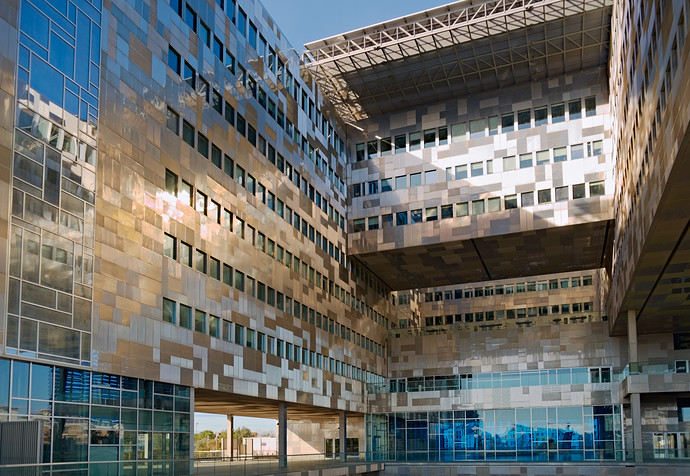After some discussion and kind explanations on the IRC channel, I submit to you, the impossible moiré challenge from hell.
20201213_0022.NEF (29.7 MB)
I tool this picture in Montpellier, it’s the city town building.
I wanted to get out of my comfort zone with some modernist geometries, and once home I notices something very strange in some areas, see if you can spot it:
The whole thing is a moiré festival, but here is a cut of the most interesting part:

Look in these two areas:
The whole area was resolved to a very strange organized mozaic of different color pathways. VERY artificial looking! And very interesting.
Changing to a demosaic algorithm of VNG4 gave this better result:
(I also changed some other things in the meantime, but they had no effect on the moiré artefacts)
It didn’t get rig of any moiré, but it at least gave a more convincing result in those heavily affected areas. I was good with it until…
…until a friend of mine gave it a shot, fired up CaptureOne, and after 2-3 clics came back with this:
Looks like C1 does have some very effective processing algorithms to deal with moiré. He didn’t even bother using a mask and instead applied the filter over the entire picture.
If you look for it, yo ucan still see areas where it struggled with moiré, but the result is pretty close from perfect.
So now, we know it’s possible to deal with it effectively.
the question is how, in darktable.
We need to act pretty early on in the processing pipeline, at demosaic or right after (or maybe before? Is that possible?)
Here is what I tried:
- different VNG4 settings, no effect
- Bilinear denoise (no effect and oh my god it destroys the picture before anyting gets better)
- Raw denoise (it might have helped, but I don’t see enough improvement to tolerate such damage, even to the most affected areas)
We need something else, there must be a way 
Good luck!
These files are licensed Creative Commons, By-Attribution, Share-Alike.
except the one out of captureone which is not mine but I have permission to post here





 )
)








